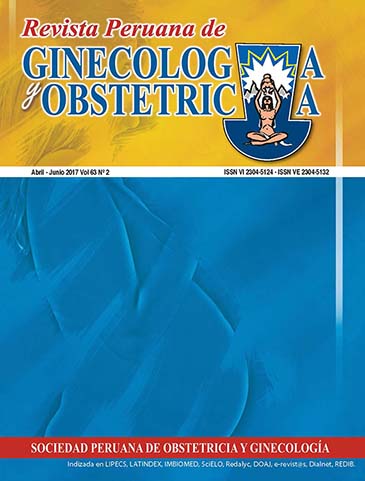Inter-twin placental anastomoses not crossing the dividing membrane: laser photocoagulation of communicating vessels in the twin-to-twin transfusion syndrome
DOI:
https://doi.org/10.31403/rpgo.v63i1993Abstract
Twin-to-twin transfusion syndrome (TTTS) is thought to result from an unbalanced exchange of blood through inter-twin vascular anastomoses. Laser photocoagulation of communicating vessels has been used to prevent the development of the syndrome. Some authors have proposed that vessels crossing the membrane are “suspicious” to participate in the development of the syndrome and the laser photocoagulation of these vessels would reverse the syndrome. We present two cases of TTTS where the communicating vessels did not cross the dividing membrane, which were successfully treated with laser.Downloads
Download data is not yet available.
Downloads
Published
2017-07-12
How to Cite
Gil Guevara, E., Díaz, R., Sosa, C., & Bermúdez, C. (2017). Inter-twin placental anastomoses not crossing the dividing membrane: laser photocoagulation of communicating vessels in the twin-to-twin transfusion syndrome. The Peruvian Journal of Gynecology and Obstetrics, 63(2), 247–252. https://doi.org/10.31403/rpgo.v63i1993
Issue
Section
Casos Clínicos
















